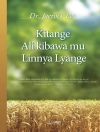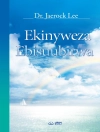Worship is at the heart of the Christian faith. This applies equally to all denominations. For that reason it is all the more important that the ordering of worship and its place in the life of the church is regularly rewritten and reinterpreted. This volume—based on the third, completely revised German edition from 2013 by two of the foremost liturgical scholars in Germany—offers a contemporary, comprehensive introduction to the foundations for the study of liturgy today, one from which scholars and students in the English-speaking world can also profit. Beyond appealing to students of liturgy and theology, this book reaches out to everyone who wants to know more about the liturgical essence and dimensions of the church.
Table of Content
Contents
Introduction xiii
1. Liturgy in Its Social Context 1
1.1 Christian Liturgy and the Multiplicity of Liturgical Celebrations 1
1.2 “Liturgy”—History of an Idea 6
1.3 The Rediscovery of the Ritual Dimension of Liturgy 11
1.4 The Complex Field of Liturgy as the Subject of Liturgics 17
2. History, Outline, and Methods of Liturgics 19
2.1 Liturgics from Within 19
2.2 Historical Development of the Study of Liturgics 20
2.2.1 Explanations of Liturgy in the Ancient Church and in the Middle Ages 23
2.2.1.1 Early Christian Examples of Reflection on Christian Worship 23
2.2.1.2 Medieval Explanations of Liturgy 27
2.2.2 Humanist Collections of Liturgical Resources and Commentaries 30
2.2.3 Rubricism in the Early Modern Era 31
2.2.4 Shift to an Independent Discipline of “Liturgics” 33
2.2.4.1 Liturgics since the Eighteenth Century 33
2.2.4.2 The Beginning of Handbooks in the Nineteenth and Twentieth Centuries 37
2.2.5 Objectives of the Study of Liturgics in the Early Twentieth Century 38
2.2.5.1 Multiple Methods in Liturgical Study 39
2.2.5.2 Liturgics as a Theological Discipline 46
2.2.5.3 Pastoral Liturgy’s Promotion of Liturgical Life 49
2.2.6 Evaluation of the Discipline of Liturgics by the Second Vatican Council and in the Postconciliar Period 51
2.2.7 Liturgics Today 52
2.2.7.1 Liturgy in a Changed Ecclesial and Social Context 52
2.2.7.2 Consequences for Method 58
2.3 How Should We Interpret Liturgy? 72
3. Historical Sketch of the Roman Liturgy 80
3.1 Study of the History of Liturgy as a Central Task of Liturgics 80
3.2 Jewish Liturgy and Earliest Christian Worship 86
3.2.1 Jewish Worship in Jesus’ World 86
3.2.2 The Beginnings of Christian Worship 90
3.2.3 Jewish and Christian Worship 92
3.2.4 Early Christian Liturgy as Attested by Selected Sources 95
3.3 Origins of the Roman Rite 100
3.3.1 Liturgical Language from Greek to Latin 100
3.3.2 Sources of Early Roman Liturgy 101
3.3.3 The Roman Bishop’s Mass around 700 105
3.3.4 Essential Features of the Roman Liturgy 108
3.4 Liturgical Centers in Late Antiquity 109
3.4.1 The Jerusalem Liturgy 109
3.4.2 The Liturgies of the Eastern Patriarchates 111
3.4.3 Non-Roman Western Liturgies 112
3.5 Adaptation of Roman Liturgy North of the Alps 114
3.5.1 Backgrounds in the History of Dogma: Defense against Arianism 114
3.5.2 Changing Images of Christ and Consequences for Devotion in Relation to Liturgical Prayer and Festal Cycles 115
3.5.3 Endurance of the Roman Liturgy 118
3.5.4 Continuity and Change in the “Roman” Liturgy 121
3.6 Basic Features of the Liturgy in the High and Late Middle Ages; the Liturgy of the City of Cologne as an Example 123
3.7 Liturgy in the Period of the Reformation and the Catholic Reform 128
3.7.1 The Medieval Heritage 128
3.7.2 The Century before the Reformation 130
3.7.3 A Reforming Project on the Eve of the Reformation: The
Libellus ad Leonem X (1513) 131
3.7.4 The Reformers’ Liturgical Reforms, with the Liturgy of the Lord’s Supper as an Example 133
3.7.5 The Catholic Reform’s Understanding of the Liturgy 137
3.8 Initiatives toward Liturgical Reform during the Enlightenment 139
3.8.1 Goals and Content of Liturgical Reform in the Enlightenment Era 140
3.8.2 Intellectual and Spiritual Background and Reforming Program: The Synod of Pistoia as an Example 143
3.9 Liturgical Currents in the Age of the Restoration 146
3.9.1 Church Music as “Sacred Art” 147
3.9.2 Development of Church Music in the Nineteenth Century 149
3.9.3 The Cecilia Movement and Increased Centralization 151
3.9.4 From Restoration to Liturgical Movement 152
3.10 The Liturgical Movement and Renewal 153
3.10.1 Personalities and Centers of the Liturgical Movement 153
3.10.2 Principles and Results of the Liturgical Reform at Vatican II 158
3.10.3 Limits of Reform and Future Prospects 164
4. Theology of the Liturgy 169
4.1 Liturgy as Assembly in the Presence of God 169
4.1.1 Assembly as an Anthropological Phenomenon 169
4.1.2 Liturgy as an Assembly Summoned by God 171
4.1.3 Celebration of Liturgy in a Structured Assembly 174
4.1.4 Listening and Responding as Fundamental Human Actions in the Liturgical Assembly 175
4.1.5 Gathering of the Community—Gathering of the Church 177
4.1.6 The Making-Present of Salvation History in the Symbolic Actions of Liturgy 179
4.2 Theo-logy 181
4.2.1 Encounter with the Personal God 181
4.2.2 Doxological Address to God 182
4.2.3 The God of History 184
4.2.4 God Images in Liturgy 185
4.3 Christology 189
4.3.1 Liturgical Prayer “to Christ” (
ad Christum)—“through Christ” (
per Christum) 191
4.3.2. Liturgy as Celebration of the Paschal Mystery 194
4.3.3 Presence of Christ in the Liturgy 199
4.4 Pneumatology 204
4.4.1 Liturgy as an Event Effected by the Spirit 204
4.4.2 Doxology, Epiclesis, Invocation 206
4.4.3 Laying-on of Hands and Anointing as Demonstrative Actions 210
4.4.4 The Holy Spirit in the Liturgy’s Poetic Texts 212
4.5 Liturgy and the Economy of Salvation 218
4.5.1 Temporal Modes of Liturgy and Participation in the Divine Economy of Salvation 218
4.5.2 The Dimension of Memory in the Liturgy 222
4.5.3 The Dimension of Expectation in the Liturgy 225
4.6 Community Liturgy and Heavenly Liturgy 226
4.6.1 Heavenly Liturgy as Glorifying God 226
4.6.2 The Earthly Liturgy’s Participation in the Eschatological Heavenly Liturgy 227
4.6.3 Earthly Liturgy in Eschatological Tension 230
4.7 The Person in the Liturgy 231
4.7.1 Sanctification of the Human Person in the Liturgy 231
4.7.2 Alteration of Human Reality 234
4.7.3 “One” in Christ: The Inclusive Image of Humanity 237
4.7.4 Human Physicality and the Liturgy 238
4.8 Liturgy and the Christian Life 240
4.8.1 Remembered Salvation History and Diaconal Action 240
4.8.2 Liturgical Anticipation of Salvation and Christian Options for Action 243
4.8.3 The Mutual Relationship of Liturgy and
Diakonia 243
5. Forms and Methods of Expression in Worship 247
5.1 Sacred Scripture in the Liturgy 247
5.1.1 The Significance of Biblical Texts in Liturgy 247
5.1.2 Biblical Books as Sacred Scripture 250
5.1.3 The Use of Biblical Texts in Liturgy 252
5.1.4 The Reception of Biblical Texts in Worship 257
5.1.5 Intertextuality of Biblical Texts in the Liturgy 262
5.2 Prayer in the Liturgy 266
5.2.1 Prayer in the Tension between Life Experience and Faith Tradition 266
5.2.2 Origins of Liturgical Prayer 269
5.2.3 God’s “Today” in the Synthesis of Time: Collapsing of Past and Future in the Now 270
5.2.4 Fundamental Theological Structures of Jewish-Christian Methods of Prayer 272
5.2.5 Forms and Formulae of Liturgical Prayer 275
5.2.5.1 Oration (Collect) 276
5.2.5.2 Structure of the Eucharistic Canon 277
5.2.5.3 Doxologies 280
5.2.5.4 Acclamations 282
5.2.5.5 Litanies 283
5.2.6 Prayer in Action: Postures and Gestures 284
5.3 The Language of Liturgy 287
5.3.1 Language as Means of Liturgical Expression 287
5.3.2 History of Language in the Worship of the Catholic Church 293
5.3.3 Liturgical Language at Vatican II and in the Postconciliar Liturgical Reform 299
5.4 Music and Hymnody in the Liturgy 307
5.4.1 Singing as an Integral Part of Liturgy 307
5.4.2 Liturgical-Theological Context of the Question 309
5.4.3 Music as Art of Time and Space 310
5.4.4 Determining the Use of Music in Worship 311
5.4.5 The “Repertoire” of Liturgical Song and Church Music 313
5.4.6 “Pop Music” and Liturgy 316
5.4.7 Theological Basis for Singing in Worship 317
5.5 Sign and Sign-Character of the Liturgy 320
5.5.1 Sign-Character of Worship 320
5.5.2 The Liturgical Space 324
5.5.3 Liturgical Places 328
5.5.3.1 The Altar 328
5.5.3.2 The Ambo 331
5.5.3.3 The Font 333
5.5.4 Vessels and Utensils 335
5.5.5 Vestments and Textiles 338
About the author
Benedikt Kranemann studied Catholic theology, German linguistics, and philosophy at the University of Münster. He began his career as librarian for the German Liturgical Institute, where he became a master of liturgical literature old and new. Since 1998 he has been professor of liturgics in the Catholic faculty at the University of Erfurt.







![Cover of Brian Schrag & Julisa Rowe: Community Arts for God's Purposes [Chinese] 貼近神心意的社群藝術 Cover of Brian Schrag & Julisa Rowe: Community Arts for God's Purposes [Chinese] 貼近神心意的社群藝術](https://static.worldofdigitals.com/thumb_webp/740/9781645083740.webp)




